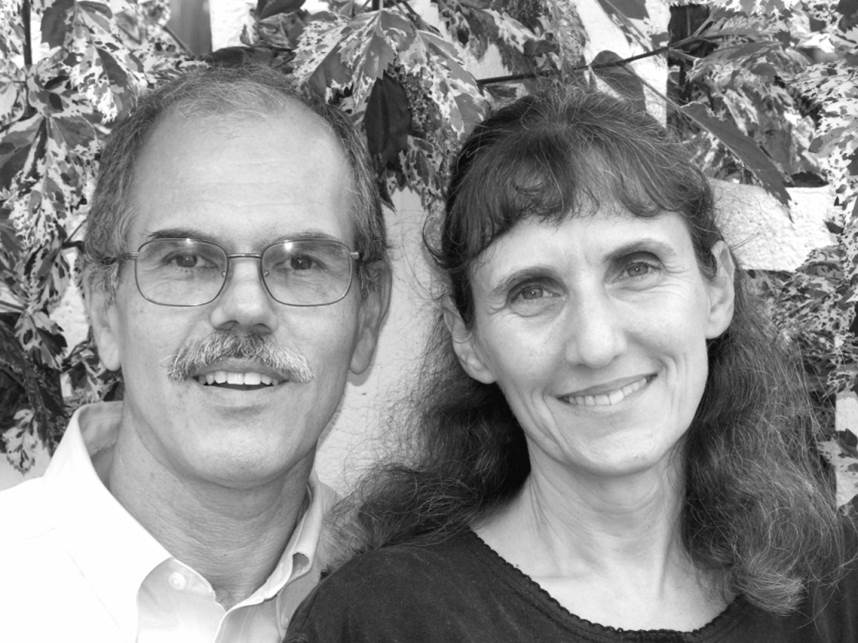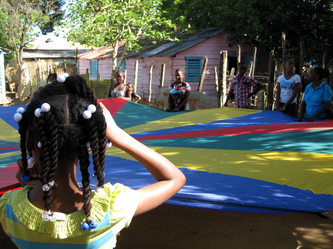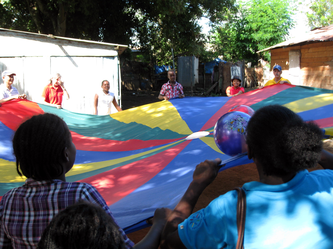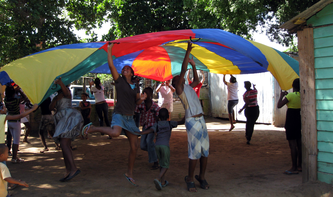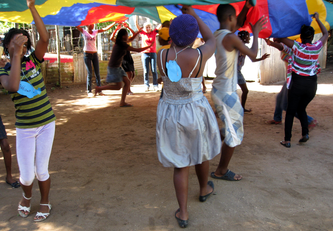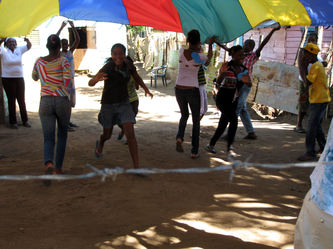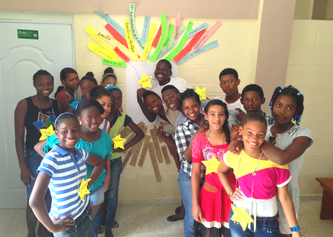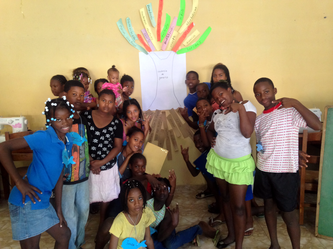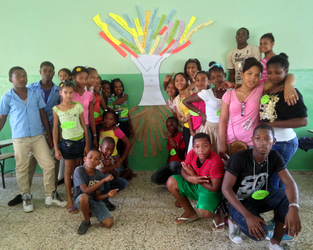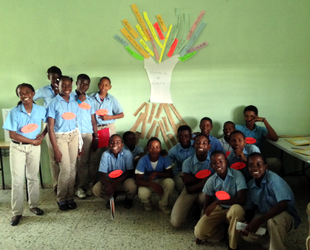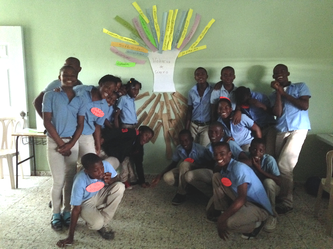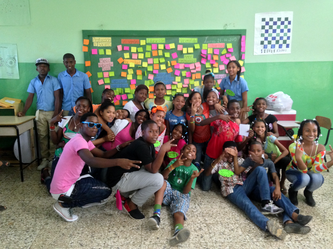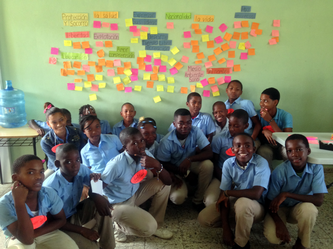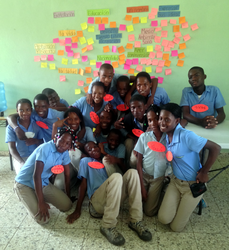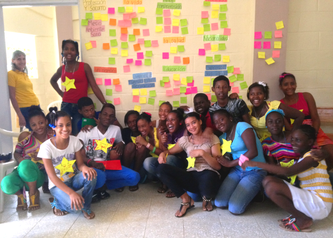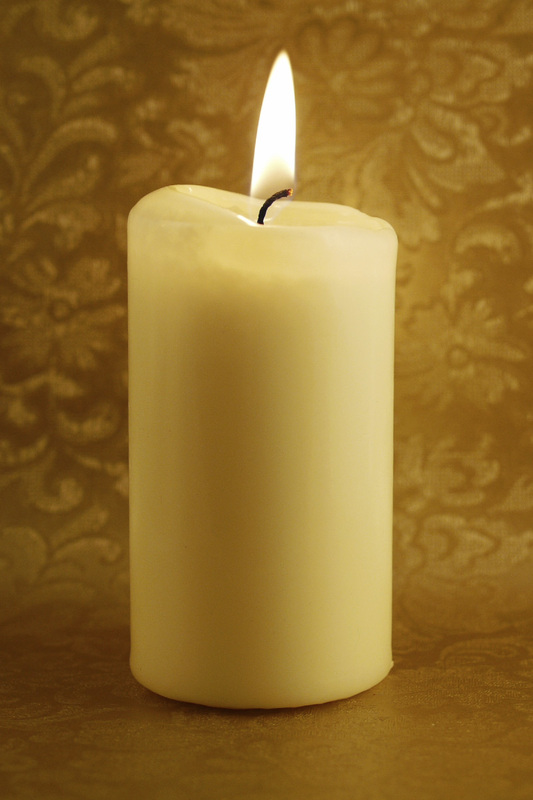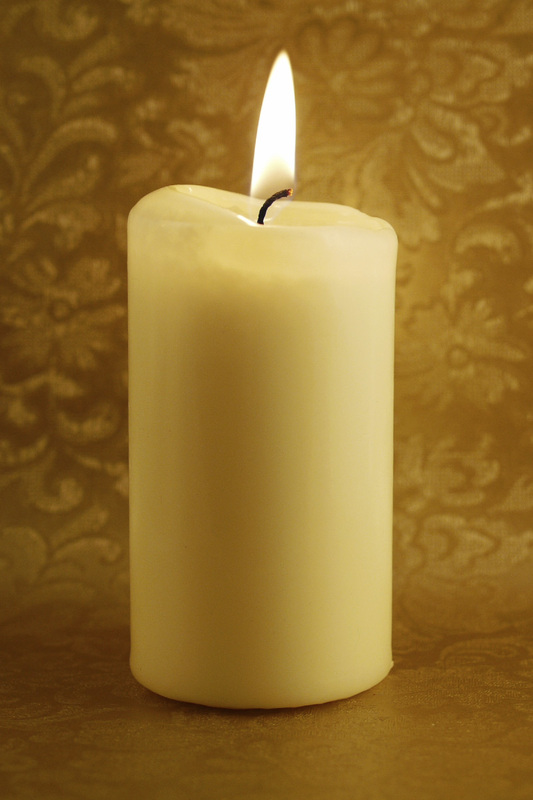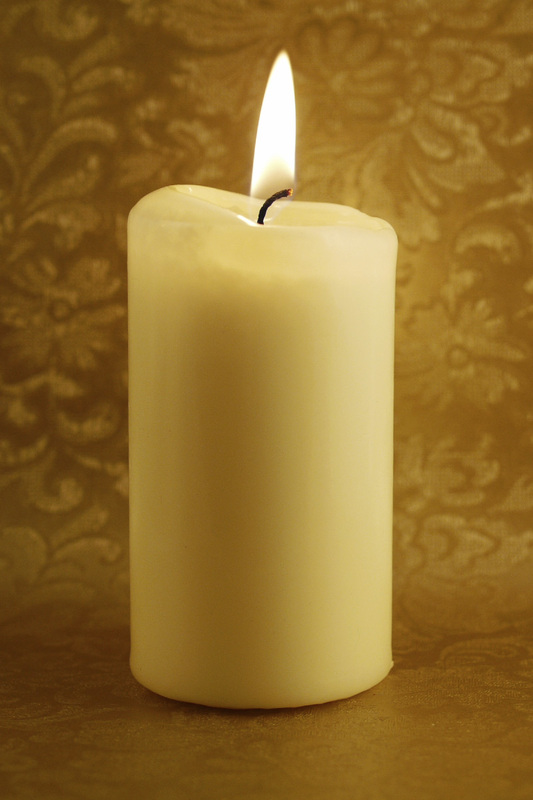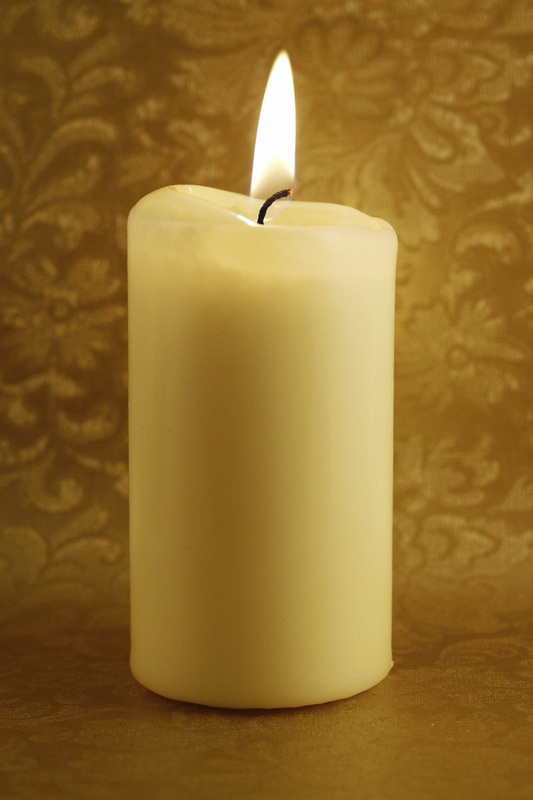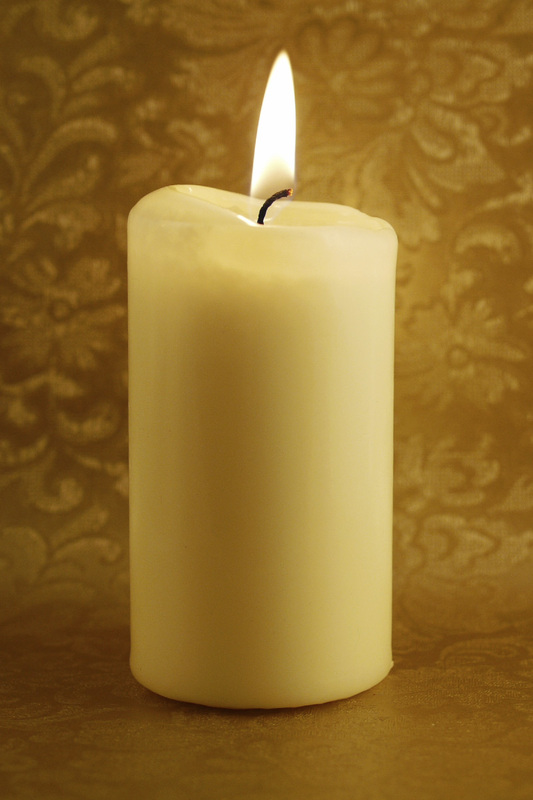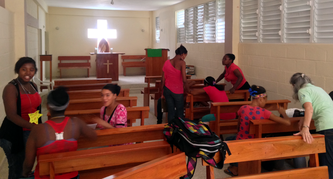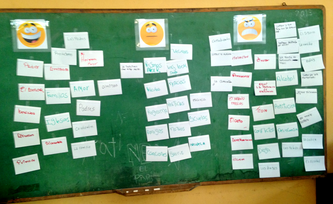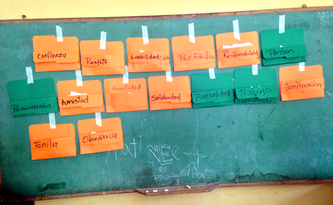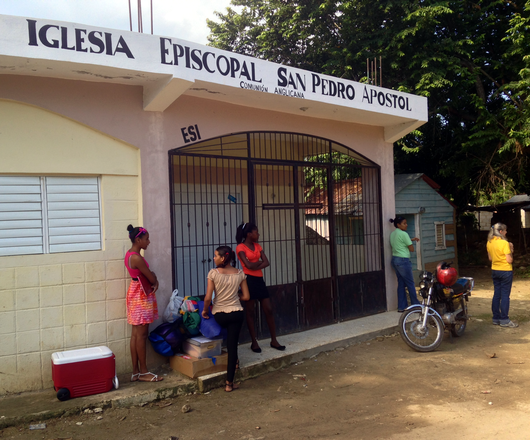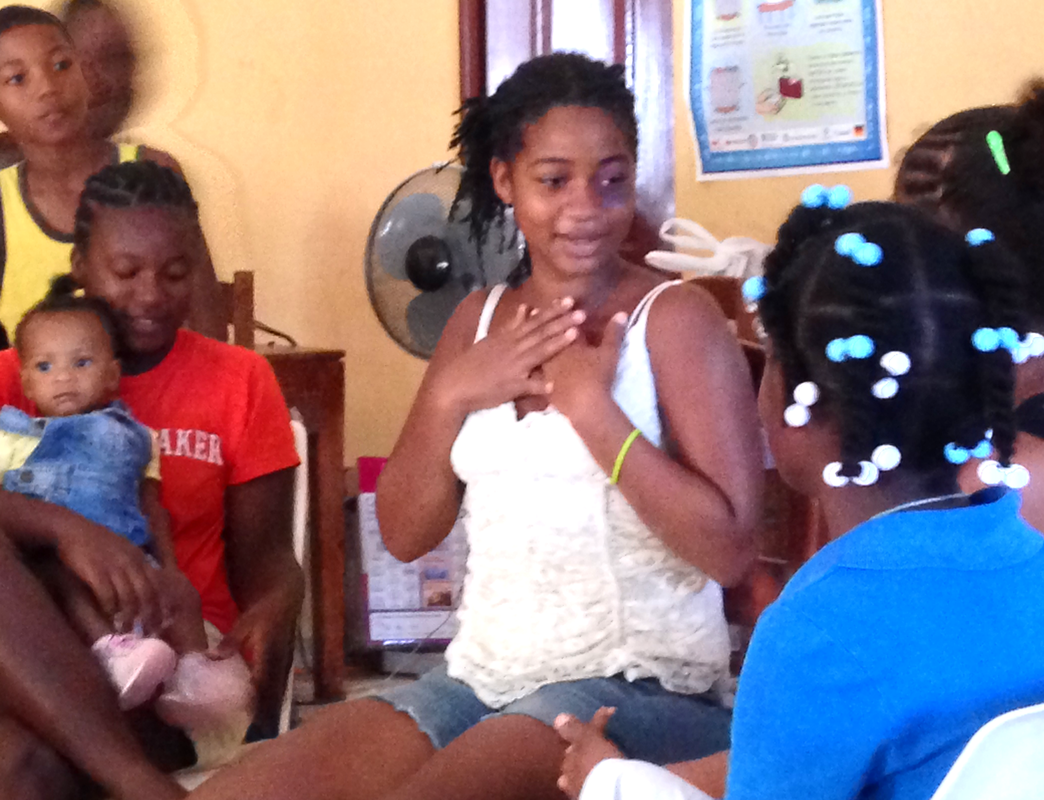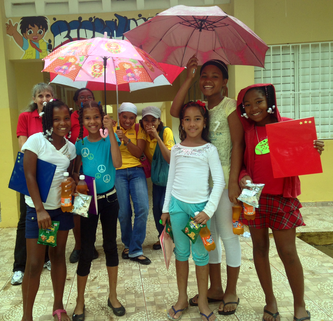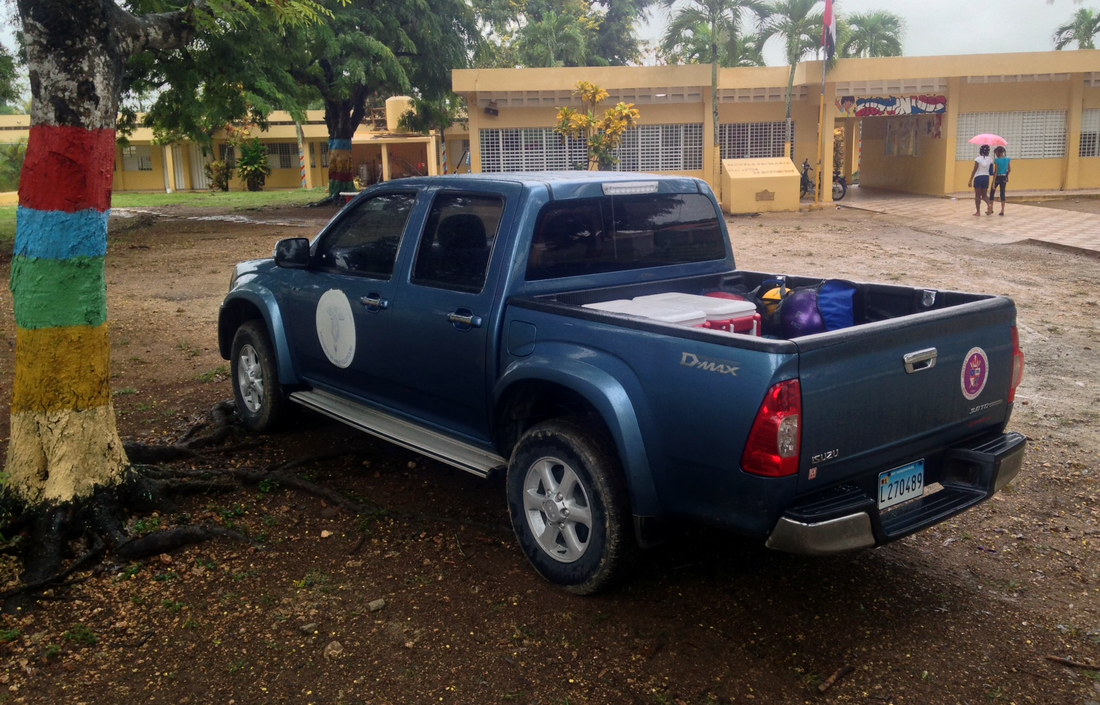|
Anita Dohn, MD, MSc
Michael N. Dohn, MD, MSc Anita & Michael Dohn are physicians who are serving as missionaries with SAMS (Society of Anglican Missionaries & Senders).
They ..."related all that God had done with them" [Acts14:27]
Anita is a Family Practitioner.
Michael is an Internist. |
We are running a life skills course for five groups of 7th and 8th graders. We chose the relevant topics based on their relationship to later episodes of domestic and gender-based violence. Each of the topics (communication, conflict resolution, respect, human rights, gender roles, power & authority, and values & influence) is familiar to the students in some form or the other.
We are spending our time listening to the students, developing points based on their contributions, and achieving objectives with material that relates to their lives. 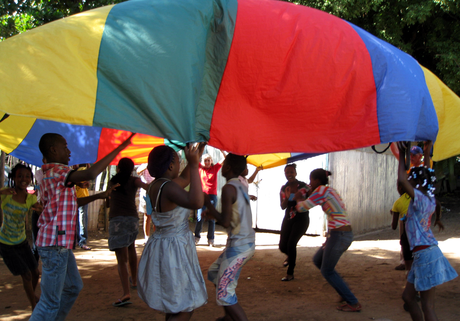 Photo courtesy of Noel Horne. Photo courtesy of Noel Horne.
El Paracaídas / The Parachute
The parachute is an analogy for society. The different pieces and colors that form a single parachute serve as a metaphor for civil society that is made up of different people and organizations. As one part of the parachute goes up or down, it elevates or depresses the areas around it, just as individuals and groups affect those around them. It works best when all the parts work together in a coordinated way. We also used it as an information gathering tool by having students exchange places running under the parachute. Some clear gender differences were seen when having students run under the parachute if they helped iron clothes at home, or wanted to be engineers, or wanted to be teachers, for example. Mostly though, it was just fun. [Click on the photos below to open larger versions]
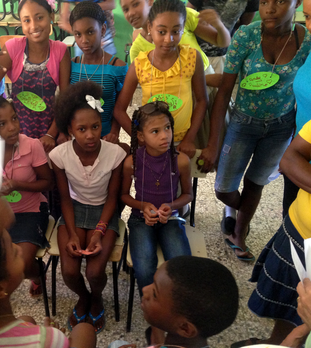
Choosing who stays in the life boat and who has to go.
Ten students picked random identities and then boarded a "life boat" that only had room and supplies for six of them. Each student shared his or her identity with the other passengers (and the surrounding "sea" populated by the other students) and made the case why they should be a survivor (sometimes a very impassioned case for survival). The activity was part of the two "values and influences" sessions with the students. The activity allowed the students to consider how we apply our values to make decisions and how others may influence our decisions. The six student "survivors" explained their rational for eliminating the other four passengers and then everyone had the chance to express an opinion. Finally, everyone had a ballot to vote their own choices for who survived and who was eliminated. No one voted to eliminate the pregnant woman. The beauty queen was on everybody's list to eliminate. All the other passengers received mixed votes on their survival value. A passenger in one life boat made the case that she was elderly, had lived a good life, and ought to leave to give someone else a chance to survive. Who was in the life boat:
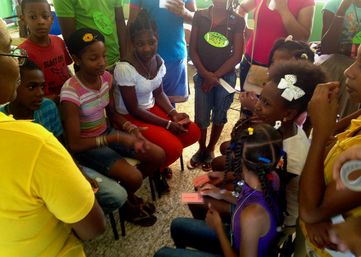 Survivors reviewing what happened. Survivors reviewing what happened.
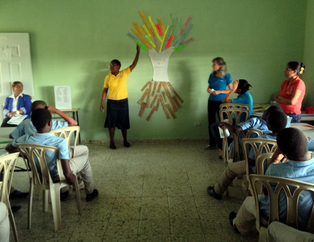
Getting some Perspective on Gender-Based Violence
Building a tree is one technique to define the 'root' causes and the branching consequences of a particular problem. The groups started with a trunk of "violencia de género" (gender-based violence) and grew their trees from there. They worked in small groups to identify root causes and branching consequences that we then added to the trunk to get a complete tree. In the picture, Maximinia is leading a discussion of the causes and effects of gender-based violence that the students identified. While we often want to alleviate the burden of a problem (the branching consequences), attacking the roots (causes) often is the way to produce lasting changes. Students can use this same technique with any problem. [Click on the photos below to open larger versions] 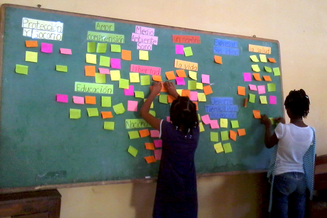
Human Rights
The picture shows several students in Hoyo del Toro using Post-It's to list different human rights that they had identified. [Click on the photos below to open larger versions] We gave a questionnaire to more than 500 high school students in this province in preparation for this program. The results indicated uncertainty and confusion regarding whether someone's exercising their rights took those rights away from someone else. Using the flames from candles as a metaphor for 'rights' was a fast and easy way to illustrate that rights are not a limited commodity. (We had to use pictures of candles - no open flames allowed in the school classrooms and community centers where we meet.)

Values and Influences
Two sessions deal with the students' values, and with the influences in their lives. The first sessions was mostly about defining and clarifying values and influences. The second session asks them to consider how they apply those values and respond to influences around them (including the 'Life Boat' activity described above).
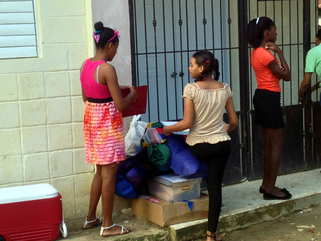
The student group in Los Conucos is meeting in the Episcopal Church San Pedro Apostol [Saint Peter the Apostle]. In the picture above, people are looking off to the right as they await the key to the church which should be coming from that direction.
Working with the community health promoters involved thermometers, chlorine bleach bottles, manuals to illustrate health promotion points to mothers, etc. Working with the students in the life skills course against gender-based violence involves a cooler to hold their snacks, a parachute, play balls, a "Wheel of Fortune" with a whiteboard surface, handouts, Post-Its, homework work sheets, and adhesive stars to stick on their folders when they do the homework, among other stuff.
Only four of the 32 students showed-up in the rain (with one little sister coming along, and the community health staff standing in the background). We gave each of them a soft drink, a bag of chips, and put a star on their folders for helping three different people during the past week. When pre-teens help someone with something three times a week for at least six weeks, the pre-teens' self-respect grows, community members' respect for the pre-teens increases, and teachers report that everyone is nicer to each other at school. Pretty good results for a very simple intervention, and a 'no-brainer' to include in our program.
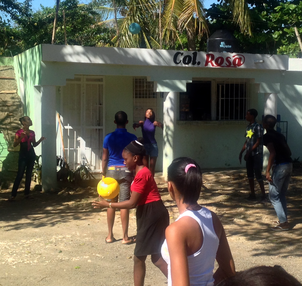
We had been worried about keeping 7th and 8th graders involved for a ten week program. We planned lots of 'fun' activities (playing with a parachute, Post-It's, role plays the students compose, a Wheel-of-Fortune, relay races, etc.), each to demonstrate a point or achieve an educational objective.
As it turns out, all of that is fun for us, too. 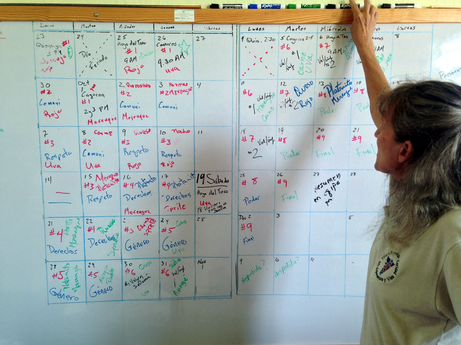
We kept track of the program with a schedule on a whiteboard. Besides tracking the program content for each group, we could also track other events (like the cancellation for rain above).
|
Page last updated 29 November 2013.

